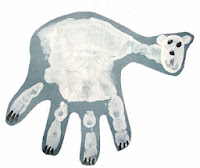Are you still looking for the perfect gift for the kids and
adults on your list? Lucky for you, The
Reading Connection (TRC) is here to help.
 Books are a great gift for kids of all ages. Build a love of reading from the very start
by giving infants and toddlers board books that were made just for them. Board books can stand up to the heavy love
that babies give them. They are resistant
to tears and being chewed on, since their pages are made of cardboard.
Books are a great gift for kids of all ages. Build a love of reading from the very start
by giving infants and toddlers board books that were made just for them. Board books can stand up to the heavy love
that babies give them. They are resistant
to tears and being chewed on, since their pages are made of cardboard. Picture books can appeal to young people from toddlers and teens, depending on their design and content. Take the time to read through a picture book that catches your eye. You might be surprised at the wit or depth contained therein. Don't hesitate to ask a bookseller to recommend her favorite titles for the children you have in mind.
"Early readers" are designed to help beginning and newly independent readers feel confident reading on their own. You'll know these books by the distinctive 6-inch by 9-inch size. Reading books on favorite subjects is a strong motivator for new readers; it's well worth your time to seek out early readers on your young reader's current passion.
Novels and nonfiction books for older kids come in all shapes and sizes. Find out what gets your recipient fired up and go from there. Some kids will want the newest book in their favorite series, and these series are available for all ages (one current favorite is Diary of a Wimpy Kid: Hard Luck). Ask a booksellers advice about the best choices for the age and interests of the child for whom you're buying.
 For the readers on your list, check out the many lists of
top books of the year. Some of our
favorites from this year are
For the readers on your list, check out the many lists of
top books of the year. Some of our
favorites from this year are
Picture books: The Day the Crayons Quit and Xander’s Panda Party
Early readers: National Geographic Readers
Middle grade: Wonder and One Crazy Summer
Young adult: Allegiant and The 5th Wave
You can also find year-end recommendations at Goodreads and Indie Bound or on our wish list. When buying books,
please support your local independent bookstores, who support TRC.





























.JPG)







